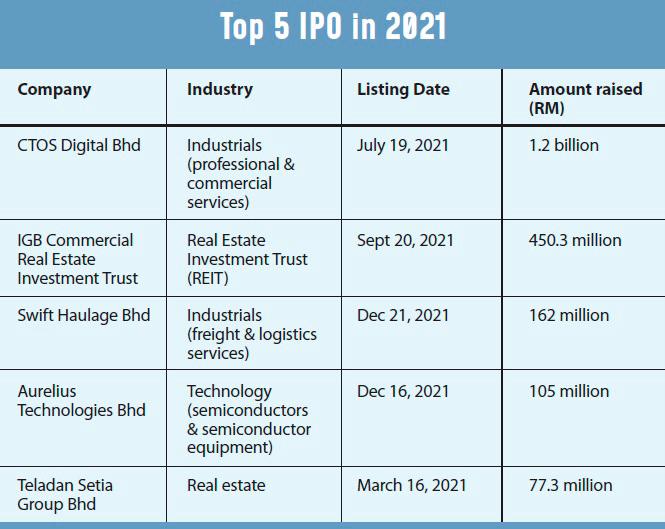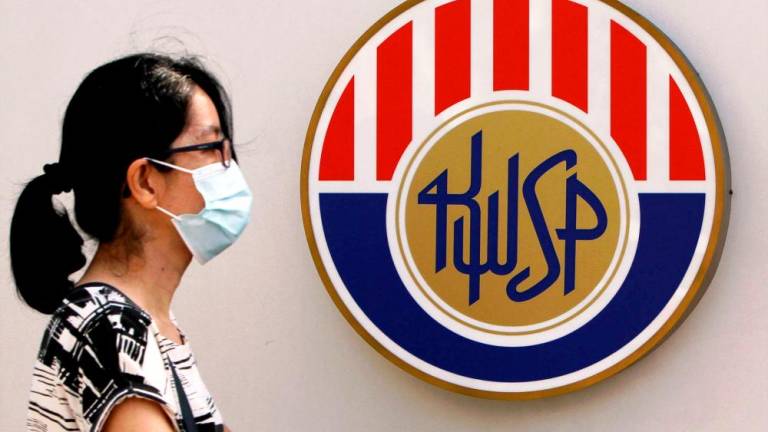PETALING JAYA: The outlook for initial public offerings (IPO) remains encouraging as the equity capital market provides companies with access to funds for growth and recovery from the impact brought about by the Covid-19 pandemic, with 30 new listings on Bursa Malaysia in 2021, a 58% jump from 19 new listings in 2020.
Bursa Malaysia is optimistic that the vibrancy and momentum of new IPOs on the bourse will remain going into 2022, particularly in the key promoted areas of technology, healthcare, halal and environmental, social & corporate governance (ESG)-related businesses.
“During the pandemic, we saw some IPO applicants delay their plans for listing and some others who were unable to complete the listing preparation work due to the MCO. However, we are confident of welcoming more listings next year based on the submissions pipeline, particularly from small and medium-sized companies,” Bursa Malaysia told SunBiz.
Key sectors associated with the recovery theme could potentially drive the market in 2022. These include, among others, tourism, gaming, construction, and building materials.
“As more money flows into strong ESG companies, which correlate with well-managed and high-performing companies, ESG-related counters could also be a potential theme.”
2021’s IPO remains healthy across all three markets, particularly in the Main Market. As of December 2021, there have been 30 new listings on Bursa Malaysia, of which, seven are on the Main Market, while ACE Market and LEAP Market recorded 11 and 12 listings, respectively. 2020 saw 19 new listings, of which two were on the Main Market, 10 on the ACE Market, and seven LEAP Market.
In the first half of 2021 (H1’21), there were 14 IPOs with RM389 million in proceeds raised totalling RM3.4 billion in the IPO market capitalisation on Bursa Malaysia. In comparison, the H1’20 saw only seven IPOs with a total of RM196 million in proceeds and an IPO market capitalisation of RM850 million.
“The IPO market for 2021 has been vibrant thus far with companies from diverse sectors listing across the three markets on Bursa including a REIT listing. We also saw our first secondary listing of OM Holding Limited this year, a company with a primary listing on the Australian Securities Exchange. OMH’s dual listing seeks to broaden its investor base and increase the liquidity of its shares via separate trading platforms.
“In line with the evolving market environment, we have seen an increase in the number of technology-based companies listed on Bursa Malaysia, with six technology companies listed to date in 2021, as compared to two in 2020. Among them is CTOS Digital Bhd, a notable IPO for this year that was listed on the Main Market with an IPO market capitalisation of RM2.42 billion,” Bursa said.
Meanwhile, Deloitte Malaysia disruptive events advisory leader Wong Kar Choon said Malaysia saw the number of IPOs going back to pre-Covid levels, driven by cornerstone investors coupled with an abundance of uninvested capital. With rising vaccination rates in the country, there is a growing number of technology-based startups and companies looking to increase their presence and capacity to tap the capital markets.
“Malaysia’s IPO market has remained vibrant. With the introduction of the Third Capital Market Masterplan by Securities Commission Malaysia, digitalisation of operations, and overall recovery of the economy from Covid-19, we are optimistic more companies will be listed in 2022,” said Wong.
To sum up, the most popular listing board in 2021 is the LEAP Market. The industry with the most listing is industrial products. Financial services are the industry with the highest market capitalisation. The largest IPO was CTOS Digital Bhd while the best performing IPO is Carzo Holdings Bhd.
Wong said a growing number of technology-based startups had been looking to tap the capital market, especially via the special purpose acquisition companies in the US.
He said an encouraging number of Malaysian companies would go for IPO next year attributed to the pent-up property and related demand due to economic recovery.










